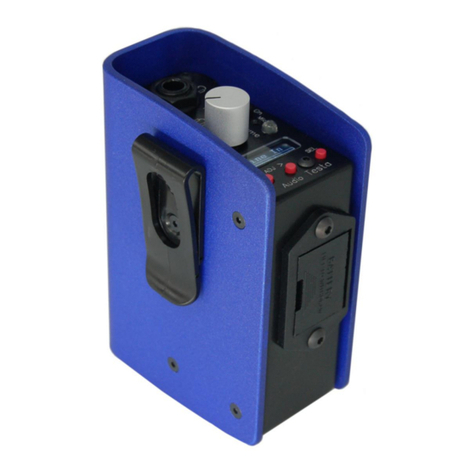
GPI connections
The DCD2020 includes three GPI inputs and three GPI outputs on the rear D15
connector. The three GPI outputs provide relay contacts which are shorted when the
commentator is on-air and open when off-air. These only switch when the on-air
keys are set to toggle mode and are intended primarily for external red on-air light
switching.
The three GPI inputs activate the Talk1 key of each of the three commentators and
are intended primarily for use with a foot switch or a remote key.
Headphone Monitoring
Each commentator has eight audio monitoring inputs with individual volume
controls, the guest position has four volume controls. Sidetone may be achieved by
routing the desired commentator to the desired volume control using Dante
Controller. Every input may be switched via individual user adjustable mini toggle
switches to left, right or both ears of the headphones.
Headphone monitoring connection may be 5 pin XLR with both microphone and
headset connection or TRS jack stereo headset connection. This jack socket is
suitable for use with both ¼ inch stereo and 316 (PO) jacks. Commentator and co-
commentator sidetone may be assigned via the display or web page..
Analogue Breakouts
There are six analogue inputs and eight analogue outputs available via XLR on the
rear of the unit, all accessible via the network. These breakouts have no fixed
function and may be used for external facilities as required. They may also be used
to provide analogue inputs and outputs to/from the commentary box. For example,
if commentator A microphone is required locally in analogue format just select the
Prog Out Com A cross point to Ana Line Out 1 on Dante controller. Using the
analogue breakouts it is possible to use the DCD2020 as an essentially analogue unit,
however it will still require some form of network connection.
Other Facilities
The DCD2020 has a built in tone generator which can be set to identify the audio
outputs, perfect for setup and identification of the audio channels with a different
tone identification on each output. Lots of lights flash when it’s on so it’s not easy to
forget. Commentator A output breaks once every three seconds. Commentator B
outputs twice, Guest three times and the mixed output is continuous.




























